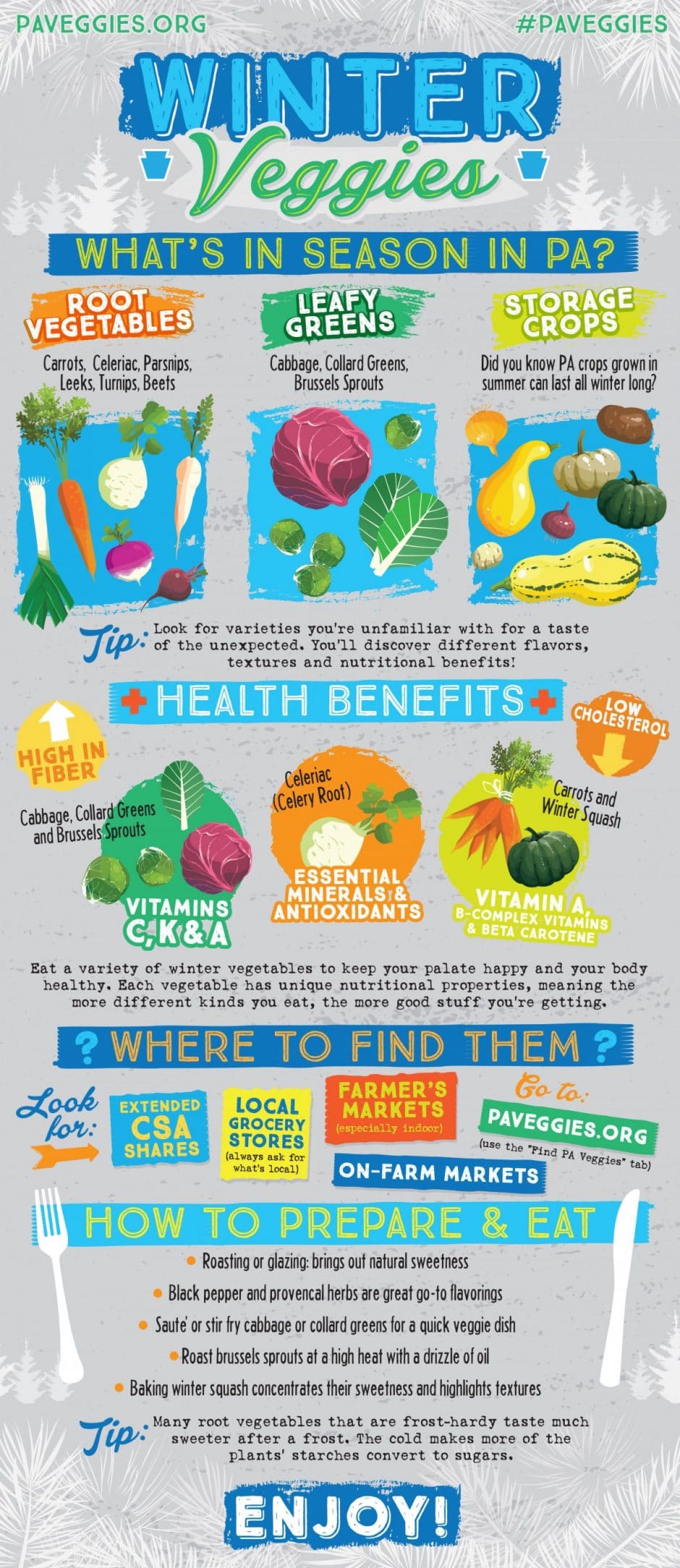Is your New Year’s resolution to eat better? As the New Year gets under way, check out this infographic from PA Veggies that shares all about the abundant fresh winter veggies available locally. Check it out below—and then read on for tips on preparing and eating winter veggies:

Where to Find Them
- During the winter, roadside stands and some farmers’ markets close up for the season, but you can still find many local growers and their produce. Look for farms that stay open for limited retail hours during the winter and offer extended community-supported agriculture (CSA) shares for the colder months. Farmers’ markets (especially indoor ones) also stay open past the growing season and sometimes year-round. Go to PAveggies.org and use the “Find PA Veggies” tab to search for your closest source of locally grown goodness.
How to Prepare and Eat
- Root vegetables greatly benefit from cooking methods that highlight their natural sweetness, like roasting or glazing. Soups and stews are also the perfect home for hearty winter roots. Celeriac, in particular, makes a wonderful side when boiled and mashed, while leeks become amazingly rich when braised in white wine. Black pepper and provencal herbs are great go-to flavorings for these veggies.
- Tip: many root vegetables that are frost-hardy taste much sweeter after a frost. The cold makes more of the plants’ starches convert to sugars.
- Try sauteing or stir frying cabbage or collard greens for a quick vegetable dish. Those techniques softens thick leaves without making them mushy. Brussels sprouts are delicious roasted at high heat with a generous drizzle of your favorite oil.
- Feature photo: Tami Seymour
- Infographic: Dish Works



